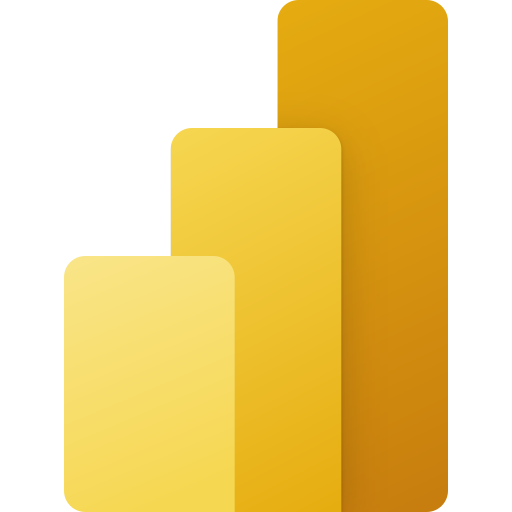formule Dax
formule Dax
Bonjour,
Je cherche une formule Dax qui me permet de prendre la version la plus récente de chacun de mes produits qui doivent être en état ‘production’ pour ensuite calculer le nombre de données manquantes dans mes autres colonnes concernées.
Exemple de fichier que je vais avoir:
<table style=”border-collapse: collapse; width: 390pt;” border=”0″ width=”522″ cellspacing=”0″ cellpadding=”0″><colgroup><col style=”width: 65pt;” width=”87″> <col style=”width: 65pt;” width=”87″> <col style=”width: 65pt;” span=”4″ width=”87″> </colgroup>
<tbody>
<tr style=”height: 16.0pt;”>
<td style=”height: 16.0pt; width: 65pt;” width=”87″ height=”21″>Produit</td>
<td class=”xl63″ style=”width: 65pt;” width=”87″>Version </td>
<td style=”width: 65pt;” width=”87″>Date de MEP</td>
<td style=”width: 65pt;” width=”87″>Projet</td>
<td style=”width: 65pt;” width=”87″>Type</td>
<td style=”width: 65pt;” width=”87″>Etat</td>
</tr>
<tr style=”height: 16.0pt;”>
<td style=”height: 16.0pt;” height=”21″>A</td>
<td class=”xl63″>1.0.1</td>
<td class=”xl64″ align=”right”>19/12/2023</td>
<td> </td>
<td>Client</td>
<td>Emergence</td>
</tr>
<tr style=”height: 16.0pt;”>
<td style=”height: 16.0pt;” height=”21″>A</td>
<td class=”xl63″>1.1</td>
<td> </td>
<td> </td>
<td> </td>
<td>Production</td>
</tr>
<tr style=”height: 16.0pt;”>
<td style=”height: 16.0pt;” height=”21″>B</td>
<td class=”xl63″>2018</td>
<td> </td>
<td>HPC</td>
<td> </td>
<td>Production</td>
</tr>
<tr style=”height: 16.0pt;”>
<td style=”height: 16.0pt;” height=”21″>C</td>
<td class=”xl63″>2022</td>
<td> </td>
<td> </td>
<td> </td>
<td>Production</td>
</tr>
<tr style=”height: 16.0pt;”>
<td style=”height: 16.0pt;” height=”21″>D</td>
<td class=”xl63″>14.9</td>
<td> </td>
<td>F3</td>
<td> </td>
<td>Emergence</td>
</tr>
<tr style=”height: 16.0pt;”>
<td style=”height: 16.0pt;” height=”21″>D</td>
<td class=”xl63″>18</td>
<td> </td>
<td> </td>
<td>Client</td>
<td>Production</td>
</tr>
<tr style=”height: 16.0pt;”>
<td style=”height: 16.0pt;” height=”21″>D</td>
<td class=”xl63″>18.0.8</td>
<td> </td>
<td> </td>
<td> </td>
<td>Production</td>
</tr>
<tr style=”height: 16.0pt;”>
<td style=”height: 16.0pt;” height=”21″>E</td>
<td class=”xl63″>2017</td>
<td> </td>
<td>SZC</td>
<td> </td>
<td>emergence</td>
</tr>
<tr style=”height: 16.0pt;”>
<td style=”height: 16.0pt;” height=”21″>E</td>
<td class=”xl63″>2020</td>
<td> </td>
<td> </td>
<td> </td>
<td>emergence</td>
</tr>
<tr style=”height: 16.0pt;”>
<td style=”height: 16.0pt;” height=”21″>E</td>
<td class=”xl63″>2021</td>
<td> </td>
<td> </td>
<td> </td>
<td>emergence</td>
</tr>
<tr style=”height: 16.0pt;”>
<td style=”height: 16.0pt;” height=”21″>E</td>
<td class=”xl63″>2024</td>
<td class=”xl64″ align=”right”>23/01/2024</td>
<td> </td>
<td> </td>
<td>Production</td>
</tr>
</tbody>
</table>Si je n’ai que les colonnes produit et version, avec la fonction max je peux récupérer la version la plus récente et je peux faire un filtre avec l’état ‘production’, par contre je n’arrive pas à compter le nombre de Date de MEP vide par exemple uniquement pour les lignes retenues.
Merci pour votre aide
Connectez-vous pour répondre.

